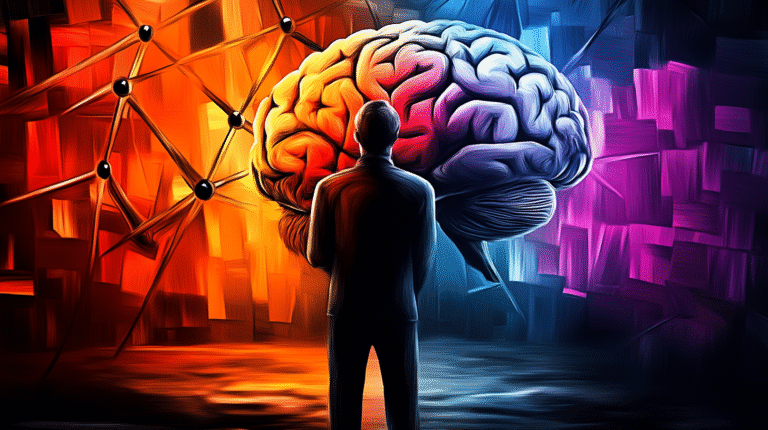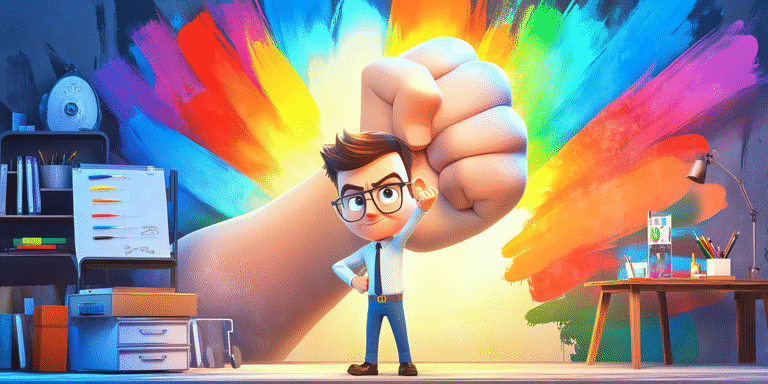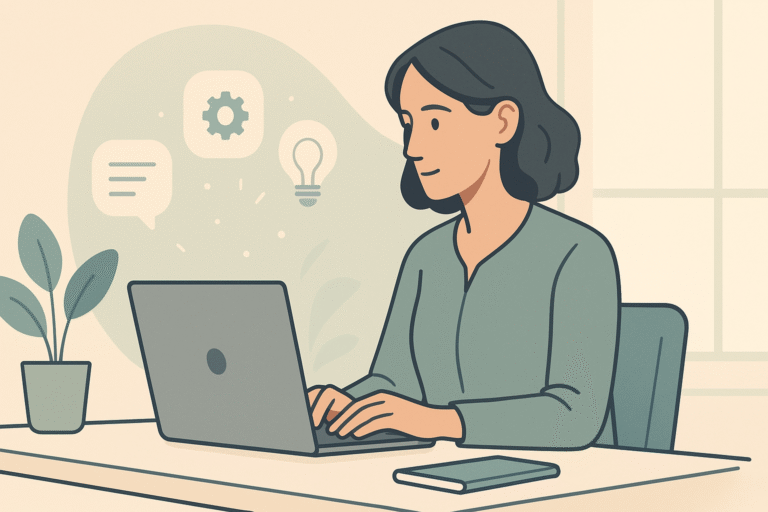Is AI Making You Dumber? What That MIT Study Really Means for Your Work
Last week, my LinkedIn feed exploded with variations of the same alarming headline: “MIT Study Proves ChatGPT Rots Your Brain!” Cue the collective panic from professionals everywhere who’ve been using AI to draft emails, summarize reports, and tackle their daily work. But before you delete ChatGPT from your bookmarks, let’s talk about what this study actually found and, more importantly, what it means for how you should be using AI in your work.
The study in question had researchers compare three groups writing essays: one using ChatGPT, one using search engines, and one relying solely on memory. They tracked brain activity and analyzed the outputs. The headline-grabbing finding? Those using ChatGPT showed the lowest cognitive engagement, with weaker neural connectivity in areas responsible for focus, memory, and decision-making.
Sounds terrifying, right? Except here’s what the headlines missed: this study involved exactly 54 people, and as researcher Ethan Mollick pointed out, it essentially tested whether people who had AI write their essays for them were less engaged with the material. The shocking revelation? They were. In other news, water is wet.
Think about it this way. If I gave you a calculator and asked you to solve math problems, would you be surprised to learn you didn’t memorize the multiplication tables while using it? Of course not. The issue isn’t the tool, it’s how we’re using it.
The real insight from this research isn’t that AI will turn your brain to mush. It’s that there’s a massive difference between using AI to do your thinking versus using it to enhance your thinking. And this distinction matters enormously for your career, especially if you’re navigating the AI transformation while juggling decades of professional experience and expertise.
The Three Gaps That Actually Matter
During a podcast discussion of this study, Paul Roetzer introduced a framework that resonated deeply with me. He identified three critical gaps that emerge when we work with AI:
- the verification gap
- the thinking gap
- the confidence gap
The verification gap is straightforward: it’s about ensuring AI outputs are accurate. We’ve all heard the horror stories of AI hallucinations and fabricated citations. But the other two gaps are where things get interesting and where the real work happens.
The thinking gap emerges because while AI can generate endless strategies, reports, and recommendations, we’re still limited by our human capacity to critically assess them. You could have ChatGPT write you 50 different marketing strategies in an hour, but do you have the time and mental bandwidth to thoughtfully evaluate each one? This is where the overwhelm creeps in, and ironically, where having AI create more actually helps us think less.
The confidence gap might be the most insidious. It’s what happens when you use AI to create something you haven’t truly internalized. Roetzer shared a perfect example: he used AI to create a strategy document, shared it with his team, but when someone wanted to discuss it the next day, he couldn’t confidently defend or elaborate on the ideas because he hadn’t done the deep thinking himself. He compared it to reading the CliffsNotes instead of the book: you might know the plot, but you can’t discuss the themes with any real depth.
Building a Better Relationship with Your AI Tools
So how do we avoid the brain-drain trap while still leveraging AI’s power? The key is treating AI as a thinking partner, not a thinking replacement. Here’s what that looks like in practice:
Start with your own thoughts first. Before you prompt ChatGPT to write that strategy document, spend 10 minutes outlining your own ideas. Use AI to expand, challenge, and refine your thinking, not to generate it from scratch. This helps in maintaining the cognitive muscles that make your experience valuable.
When you do use AI for creation, build in a digestion phase. If ChatGPT helps you draft a proposal, don’t just clean it up and send it off. Take time to internalize the content. Rewrite key sections in your own words. Add examples from your experience. Make it yours so you can stand behind what you’ve created.
One practical technique I’ve found invaluable: after using AI to help create something substantial, close your laptop and explain the main points to yourself out loud. Can you articulate the key ideas without looking at the document? If not, you haven’t truly processed the information.
Consider adopting what I call the 80/20 rule for AI assistance. Use AI for 20% of the heavy lifting – research gathering, initial brainstorming, formatting, editing. But reserve 80% of the actual thinking, synthesizing, and decision-making for your human brain. This ratio keeps you cognitively engaged while still benefiting from AI’s efficiency.
The Competitive Advantage of Deep Thinking
Here’s what the alarmists missing from their “AI will make us all stupid” narrative: in a world where everyone has access to the same AI tools, the ability to think deeply becomes your competitive advantage, not a luxury you can’t afford.
Your clients, colleagues, and employers aren’t paying for your ability to prompt ChatGPT. They’re paying for your judgment, your ability to spot patterns, your capacity to make connections that AI can’t. These abilities only stay sharp through use. The professionals who will thrive in the AI age aren’t those who resist the technology or those who blindly delegate to it. They’re the ones who use AI to amplify their thinking, not replace it.
The MIT study, despite its limitations, offers a valuable reminder: cognitive engagement matters. But rather than seeing this as a reason to avoid AI, see it as a call to use AI more thoughtfully. Every time you’re tempted to let AI do all the work, ask yourself: what am I optimizing for here? Speed? Or the kind of deep understanding that makes me irreplaceable?
Your brain isn’t a muscle that atrophies from AI use any more than your legs weaken from driving a car. But just as you still need to walk to stay healthy, you still need to think to stay sharp. The trick is knowing when to ride and when to walk.
Ready to build a more thoughtful relationship with AI in your work? Let’s continue the conversation. Connect with me on LinkedIn to explore how you can leverage AI while keeping your cognitive edge sharp.







